Vulcan bomber 'force for peace', Port Stanley pilot says
- Published
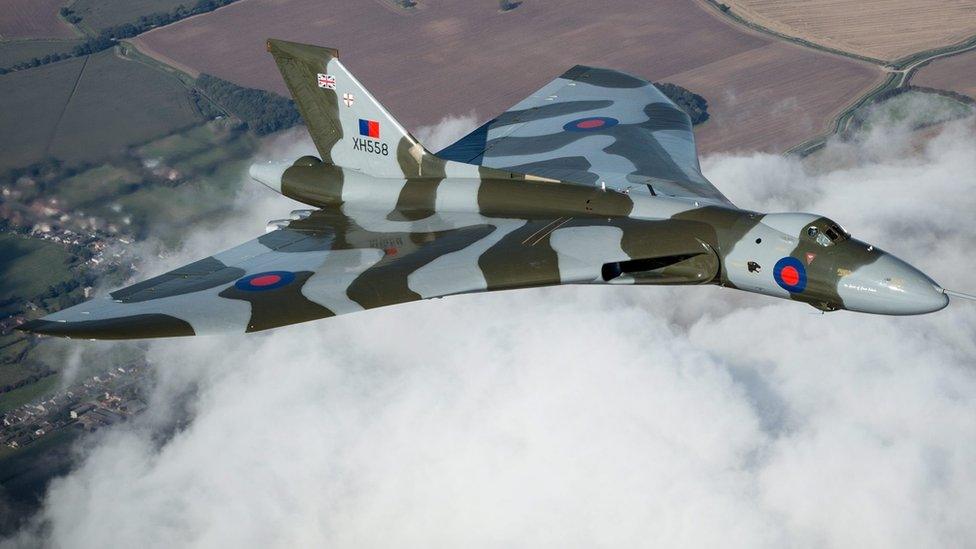
The bomber is due to be grounded later this month after engineering backers withdrew support
A pilot who led the first Vulcan attack on Port Stanley airfield during the 1982 Falklands War believes the aircraft was a "force for peace".
Vulcan bombers were built at the height of the Cold War to carry Britain's nuclear weapons to the Soviet Union.
Pilot Martin Withers said: "Its original function was to keep the peace and not really to drop bombs."
Mr Withers was one of the pilots to fly the last airworthy Vulcan - XH558 - which is in its final season of flight.
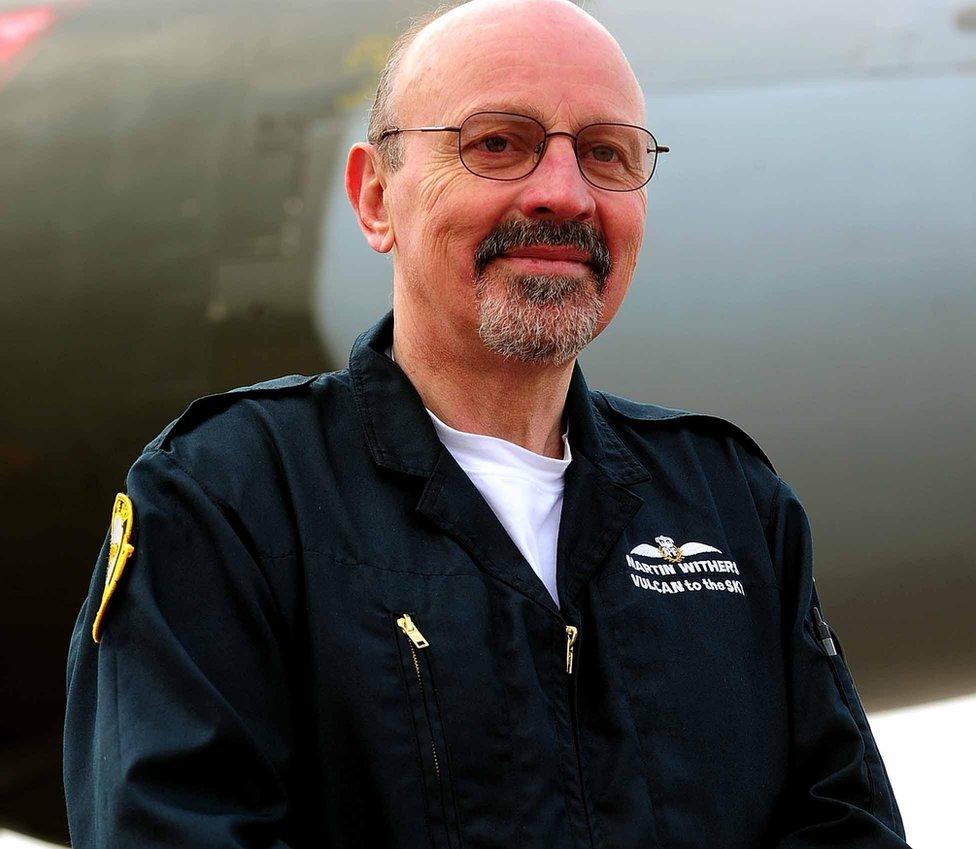
Pilot Martin Withers said the aircraft's main purpose was as a nuclear deterrent
Vulcans from RAF Waddington, external in Lincolnshire were involved in seven missions to bomb Port Stanley airfield.
The raids were the only time in the Vulcan's 30 year service with the RAF that saw it drop bombs in anger.
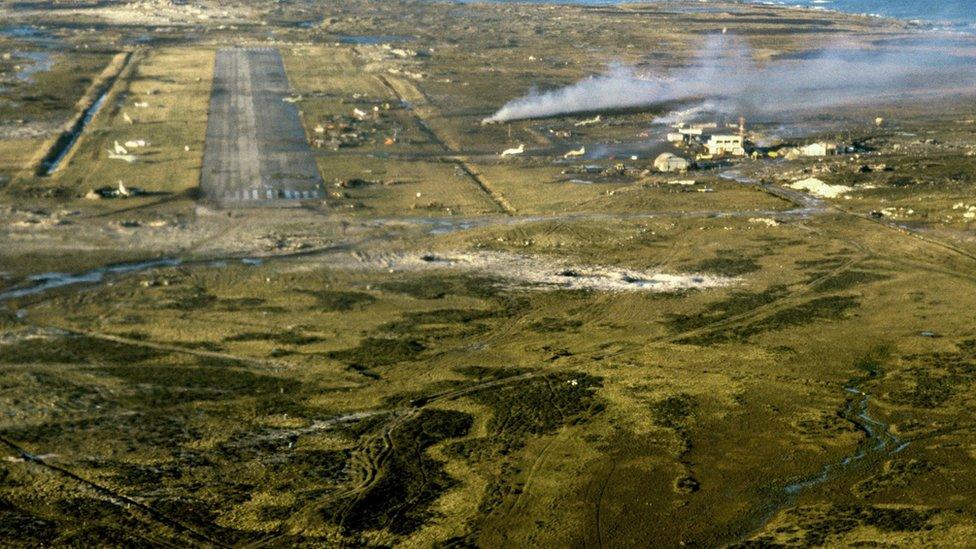
Vulcan bombers from RAF Waddington took off from Ascension Island to carry out bombing raids on the airfield at Port Stanley
Mr Withers said aside from its use in the Falklands, the purpose of the Vulcan was to be a "nuclear deterrent".
"It's not there really to drop bombs, it was about developing something that is capable of doing it to make sure nobody does attack you.
"And it did prove it does work," he said.
He added: "It came very close in 1962 during the Cuban Missile Crisis."
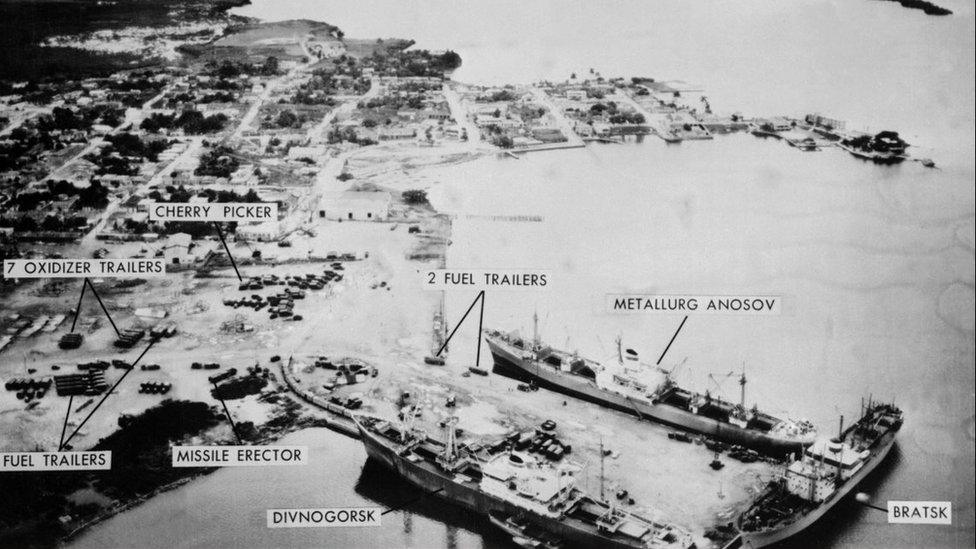
This image shows soviet ships waiting to be loaded with missiles in accordance with the US-Soviet agreement on the withdrawal of the Russian missiles from Cuba in 1962
'Grown men crying'
Mr Withers has continued to fly the last airworthy Vulcan - XH558 - from its base at Robin Hood Airport, Doncaster.
The aircraft will be grounded on 30 October. The pilot said he has been greeted like a "rock star" at air shows during the bomber's final display season.
"People seem to really adore this aeroplane, I can't really explain it," he said.
"I've been on the ground at one or two air shows and people are just sobbing - grown men are crying on one another's shoulders and all the rest of it."
Mr Withers said he will miss flying the Vulcan but not its famously cramped cockpit.
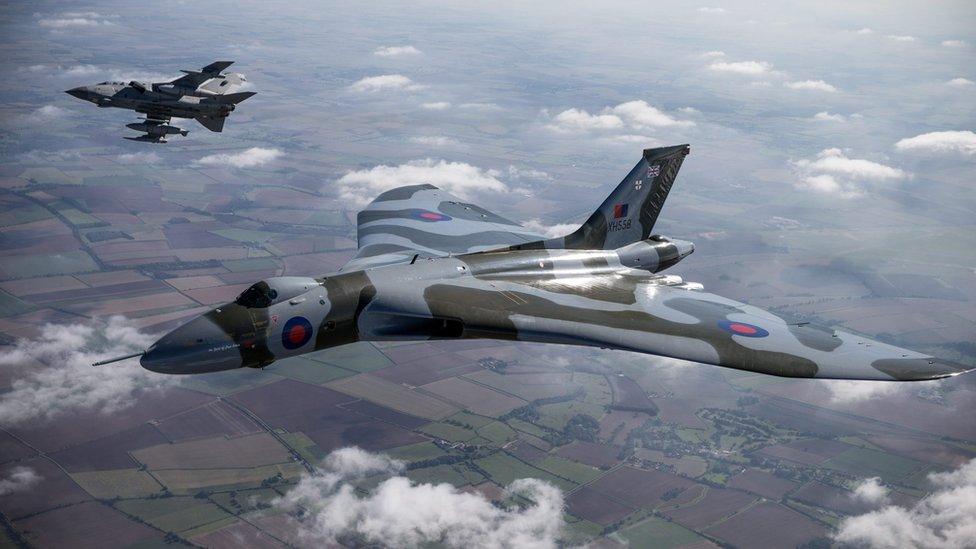
RAF Tornado jets flew with the Avro Vulcan over Lincolnshire earlier this month to mark her retirement
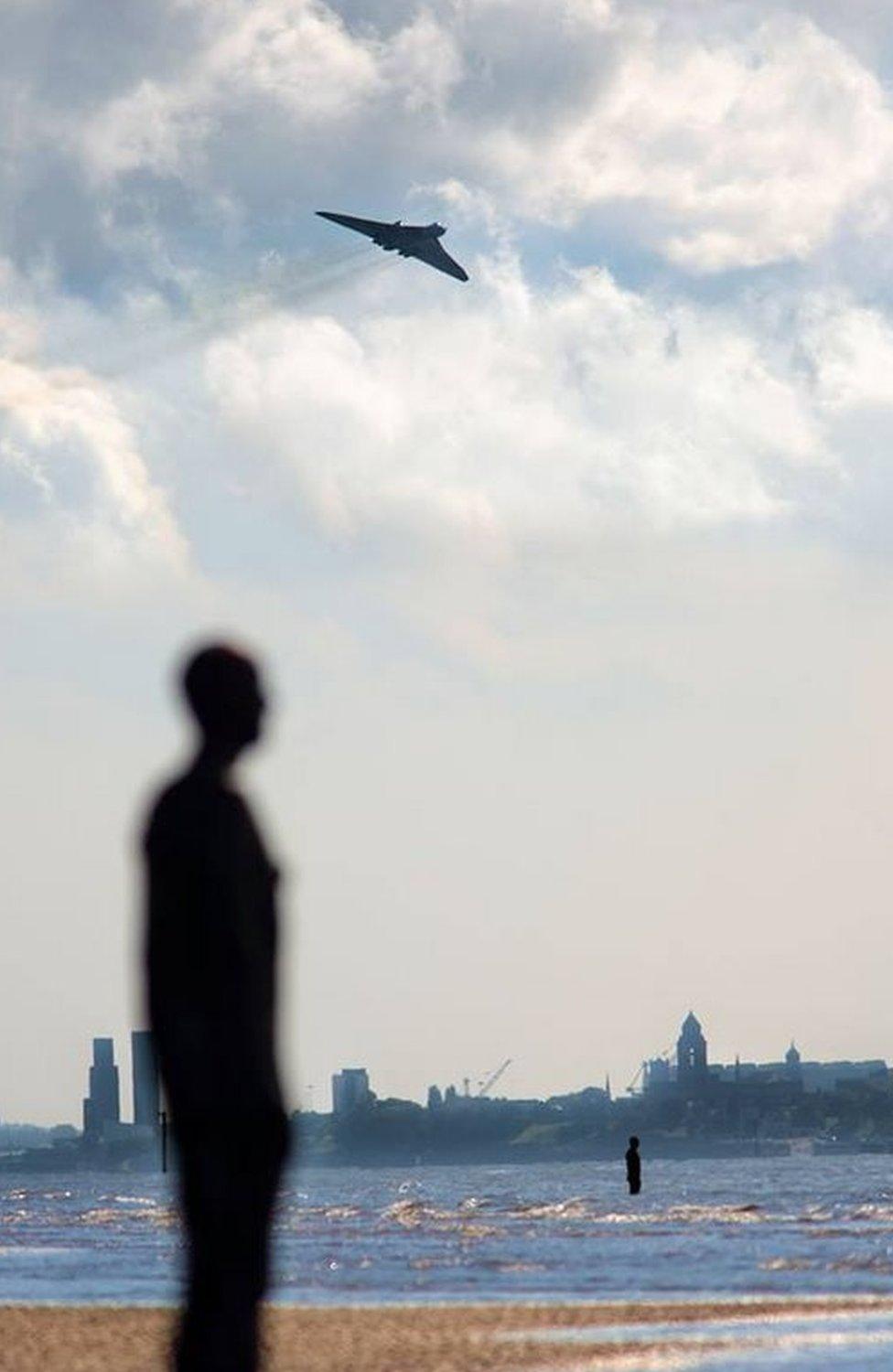
James Will photographed the Vulcan flying past Anthony Gormley's "Another Place" sculptures on Crosby beach in September

The Red Arrows formed a V formation around the Vulcan as part of the Southport Air Show
Earlier this month, the XH558 bomber appeared over RAF Waddington and Bruntingthorpe Airfield .
Bruntingthorpe was the Vulcan's first home after its RAF career and where the aircraft was restored by the Leicestershire-based charity Vulcan to the Sky Trust, external.
It said it was in talks with Robin Hood Airport and police about whether a final flight can be scheduled, given concerns about crowds around the airport.
If a flight does go ahead, the trust said it would be streamed over the internet to allow as many people as possible to witness the event.
Any announcement will be made on social media, external.

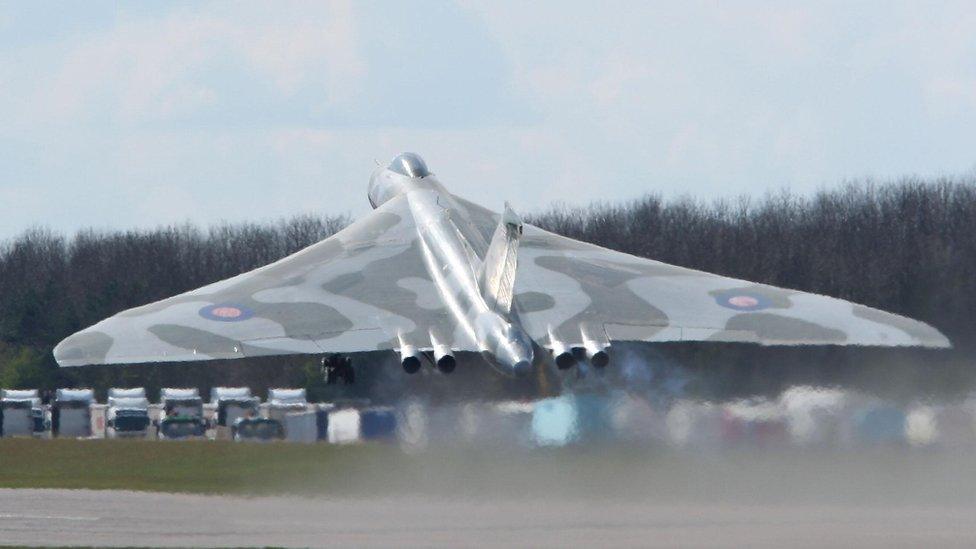
Vulcan fact file
Took flight for the first time in 1952
It was in service from 1960-1993
Has a top speed of about 600mph (1,000km/h)
Costs £2.2m a year to keep the XH558 maintained, including insurance
The Vulcan to the Sky Trust, which owns the plane, said its age and withdrawal of technical support makes its future unviable
It costs £19,000 an hour to fly
Its last combat mission was over the Falkland Islands
- Published11 October 2015
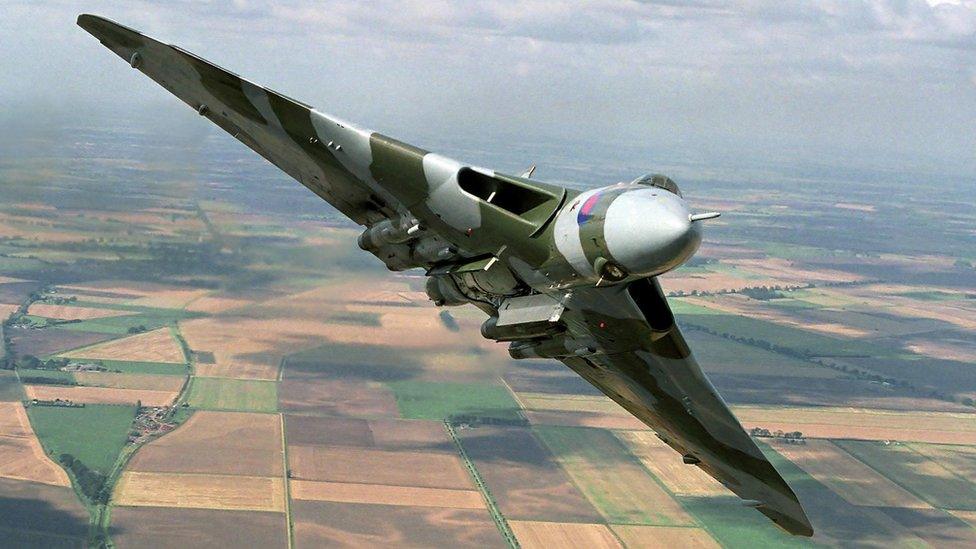
- Published10 October 2015
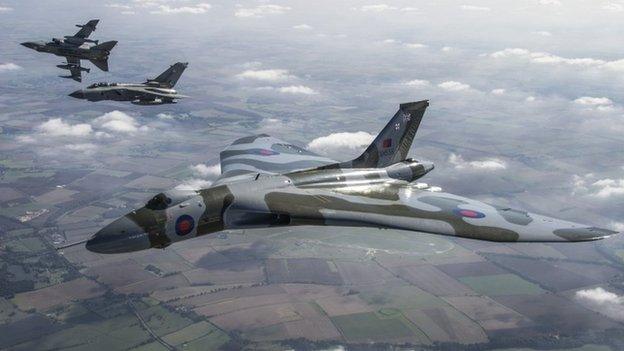
- Published10 October 2015

- Published6 October 2015

- Published4 October 2015
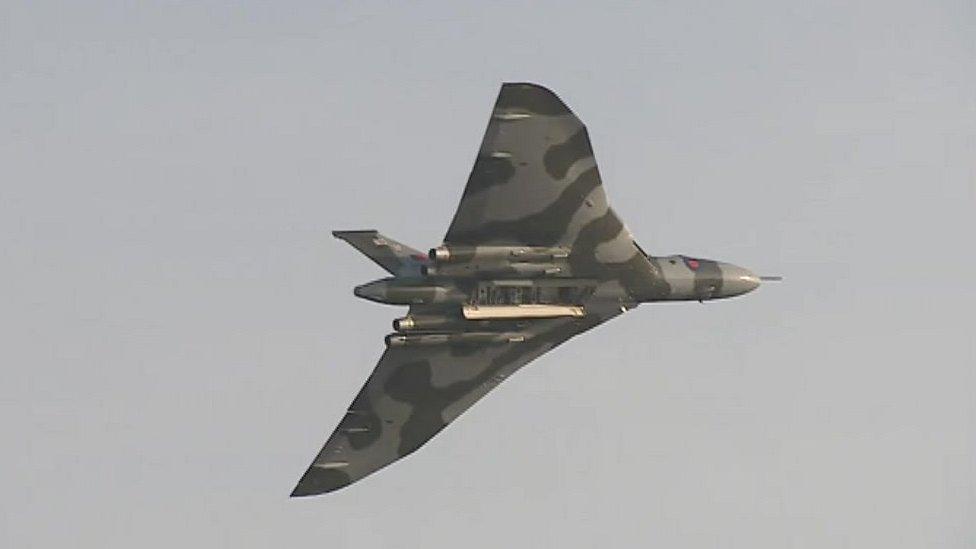
- Published2 October 2015
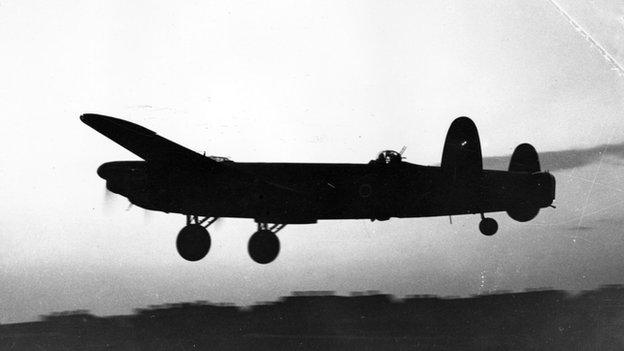
- Published29 May 2015
